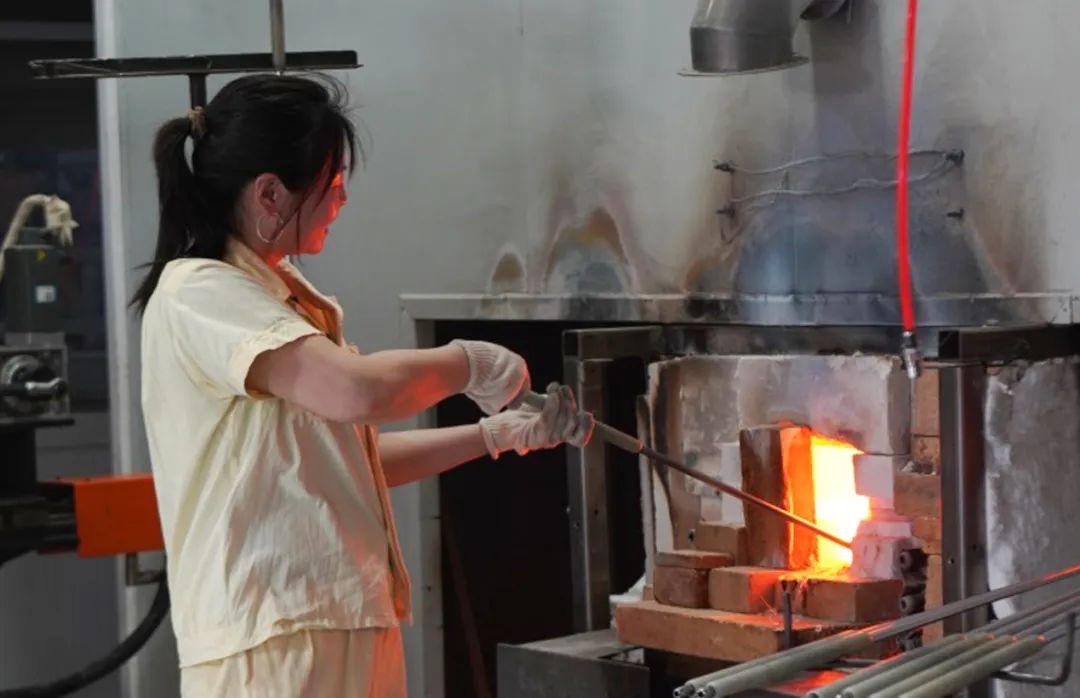000
It is inevitable that defects like bubbles, stones, stripes, and nodules occur in the process of glass manufacturing (see Figure 1). These defects usually directly influence the appearance and performance quality of glass products, and even affect the forming and processing of glass products, or cause a large amount of waste.

Fig.1 Common glass defects (left to right: bubbles, stones, stripes)
Bubble, visible gas inclusions in glass, is deemed as one of the most common glass defects. As a matter of fact, there is almost no type of glass without bubbles. However, the bubble size in some high-quality glass is too small to be seen clearly with our eyes. Bubbles are likely to affect the appearance, transparency, mechanical strength, and optical uniformity of glass products.
In terms of the quality standards for glass products, the degree of defects is determined based on the diameter of bubbles or the number of bubbles per unit volume (or weight), so as to classify glass product grade. The bubbles are in spherical, elliptical, or elongated shapes, and their shape is closely related to the formation process. Bubbles can fall into the following categories based on the size of bubbles includes:
·Large bubbles: larger than 2mm;
·Small bubbles: 0.2mm-2mm;
·Tiny bubbles or gray bubbles: smaller than 0.2mm.
Bubbles can be divided into the following types based on the formation causes:
① Primary bubbles, also known as residual bubbles in the batch mix, are generated because the clarity of the glass liquid is poor and gas released from the decomposition of the batch is not completely discharged. In the glass melting process, carbonates, sulfates, nitrates, and other substances in the powder will decompose and a large amount of gas will be released. Some volatile components will also form a large amount of gas. Most of such gas is already released at the silicate formation stage, but a small amount of gas remained after the glass formation forms visible bubbles in the glass.
② Secondary bubble refers to tiny bubble redissolved from clarified glass due to temperature, atmosphere, or pressure fluctuations. After the clarification of the glass liquid, large bubbles float and release, while small bubbles dissolve in the glass liquid because of surface tension. Gas and liquid coexist in a balanced state. Gas dissolved in the liquid phase generally will not grow into bubbles in case of temperature fall. However, in the cooling process of glass liquid, the established gas liquid equilibrium would be destroyed by fluctuations in temperature, atmosphere, or pressure, as a result, bubbles or gray bubbles reappear.

Fig.2 Glass liquid
③ Refractory bubbles refer to bubbles produced through the physical and chemical interactions between glass liquid and refractory materials. Refractory materials have porosity. When glass liquid comes into contact with refractory materials, the glass liquid is sucked into pores due to the capillary action of pores, and the gas in the pores is squeezed into the glass liquid to form bubbles. After the refractory materials are corroded, some components like SiO2 and Al2O3 are dissolved in the glass liquid, which breaks the balance and causes bubbles precipitated from gases (such as SO2 and CO2) that were originally dissolved in the glass liquid.
④ External air bubbles: There are many reasons for causing air bubbles, for example, in the course of feeding, air is inevitably introduced into the gaps between powder particles; During glass forming, improper working-out operations can easily cause bubbles and other defects. The features of external air bubbles lie in relatively large bubbles of above 2mm, such bubbles occur and is irregularly distributed in fixed parts of the glass product.

Fig.3 Glass bulb production
⑤ Bubbles arising from metallic iron: When entering the glass liquid, metallic iron will be oxidized and dissolved, so that the glass turns brown. Meanwhile, carbon in iron is oxidized into CO or CO2 bubbles. Such bubbles are mostly caused by careless operation. For example, tools and other iron objects are dropped into the kiln, or iron objects are not removed during maintenance, or iron nails, shavings and other iron objects are mixed into the batch.
In brief, there are several complex and diverse causes for bubble formation. Beijing Hamamatsu Photon Techniques INC. is engaged in the production process and strives to maintain stable melting technology and forming conditions. Based on the usage scenarios of various products, our company may customize the proper quality inspection plans to gurantee that the appearance and performance of the products satisfy customer needs.
Selected from New Edition of Glass Technology